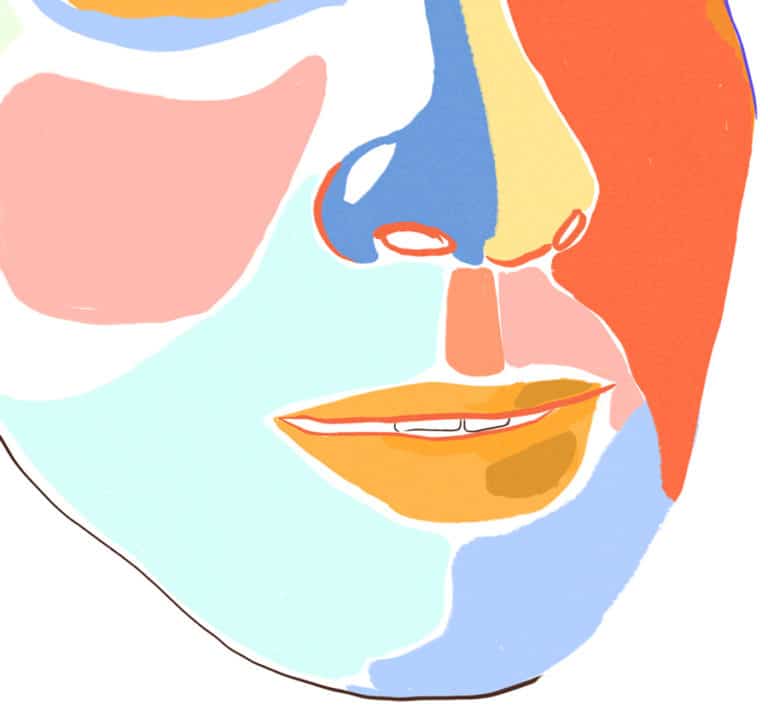@AskAPoC is fighting racial stereotypes one question at a time

Shakerah Penfold has created something I haven’t seen before. As the uncertainty of our times is caused by a myriad of factors—be it unprecedented Brexit proceedings, politicians showing their prejudice across national TV or the rise of hate crime towards minorities—this hostile air can make communities feel polarised and divided. The @AskAPoC Instagram account is a space on the internet where that gap shrinks. This account is where you can ask a question regarding race or stereotypes and be answered by Penfold and the @AskAPoC community. And all it costs is one British pound.
Screen Shot magazine sat down with Penfold to discuss how in an era of being either ‘cancelled’ or ‘woke’, asking unfiltered questions works.
On a daily basis, Penfold works performs a charitable service by pairing vulnerable people with volunteer opportunities. The founder of @AskAPoC describes herself as not having a penchant for long walks on the beach, but one for dismantling racial stereotypes and “fighting the patriarchy before breakfast”. A southerner “lost up North”, Penfold was inspired to create @AskAPoC when she saw a @trueblacksoul post asking white people to ask a question that they have always wanted to know the answer to. Realising this could be a regular conversation and somewhere she could direct people in her workplace (especially when they asked her 21 questions about her hair), @AskAPoC was born.
“So it’s a pretty basic concept whereby curious people can send a question anonymously to the page and it’s answered by myself, and/or the community that the question is aimed at,” explains Penfold. Those who want to ask a question, have to first donate to the charity founded among Penfold and her friends called Food For Thought SL. The money from platforms such as @AskAPoC goes to building sustainable development projects in a village called Robuya in Sierra Leone. After the money is donated, you can then direct message the account and Penfold will share the question and her answer and then give it up to the floor (the @AskAPoC Instagram community) to chime in as well.
Though the questions are largely asked by white women and answered largely by women of colour, the audience for @AskAPoC is diverse, and Penfold and her team don’t know what the race of the quizzers are unless their question reveals it. Was she afraid of creating an echo chamber with her views front and centre? “I wish!” says Penfold over email—I can almost hear her passion over Gmail. “The page is called @AskAPoc, meaning that only people of colour need to answer. However, we still get a LOT of non-people of colour answering and taking up space so there are no chances of an echo chamber.”
With accounts such as @AskAPoC, it’s important to remember that people of colour as a whole are not a monolithic group. Even the phrase ‘people of colour’ is debated on widely, as it implies that white people make the norm and everyone else the are ‘others’. “In fairness, even without that input, people of colour are all raised in different societies and cultures so there’s always conflicting answers. I say go with whichever answer feels right to you,” adds Penfold.
Having experienced racism in the past, and having had to explain why macro and microaggressions are not acceptable for Z, Y, and X reasons, I know the emotional toll racism can take first hand. Therefore, discovering @AskAPoC, I initially thought it’s only fair that the minimum should be to donate to a charity first. But then I thought, why is it always the work of women of colour, and especially black women, to undo ignorance? The intellectual, social, and mostly emotional labour Penfold and her community do regularly is not a small task, especially as the @AskAPoC community grows.
“Sometimes it feels emotionally draining, especially when non-people of colour are in the comments trying to justify or push their own agenda,” says Penfold when I ask if this all feels too heavy to carry. The founder also mentions how yes, there are frequently asked questions that are disheartening such as “Why can’t I wear my hair in braids?” and “Why can’t I say the N-word?”. “However, it’s always balanced when I get emails saying how much someone loves the page and how much they have learned from it”. What Penfold really teaches through @AskAPoC is to spot the intention behind a question. Not all of us live in cosmopolitan cities nor do we all have the same experiences; therefore, being considerate within the @AskAPoC community is imperative, and it works both ways.
It’s also a space to understand how valid black and brown reactions are regardless of the intent.
I don’t believe that people of colour can undo a systemically racist system that continues to undervalue us by the spreading of information only, especially if those stories fall on defensive and deaf ears. Nor do I think we should expect that this is a task for people of colour to undertake on their own. However, what accounts such as @AskAPoC do is allow an open conversation to take place, and, essentially, share hope in what can feel like dire times.
Though black and brown bodies and minds have every reason to be angry at the mistreatment of their communities, their marginalisation also tends to evoke profound compassion, knowing what it’s like to be pushed aside. It’s this empathy that has taught Penfold and her community so much about humanity. “People are so willing to be educated and people like to help others learn. I think that’s beautiful, especially in the world we live in. I love how a community of people of colour who may have faced so much ignorance in their lives have not hardened their hand, but draw on those experiences to try and stop it happening to their fellow sister or brother.”




